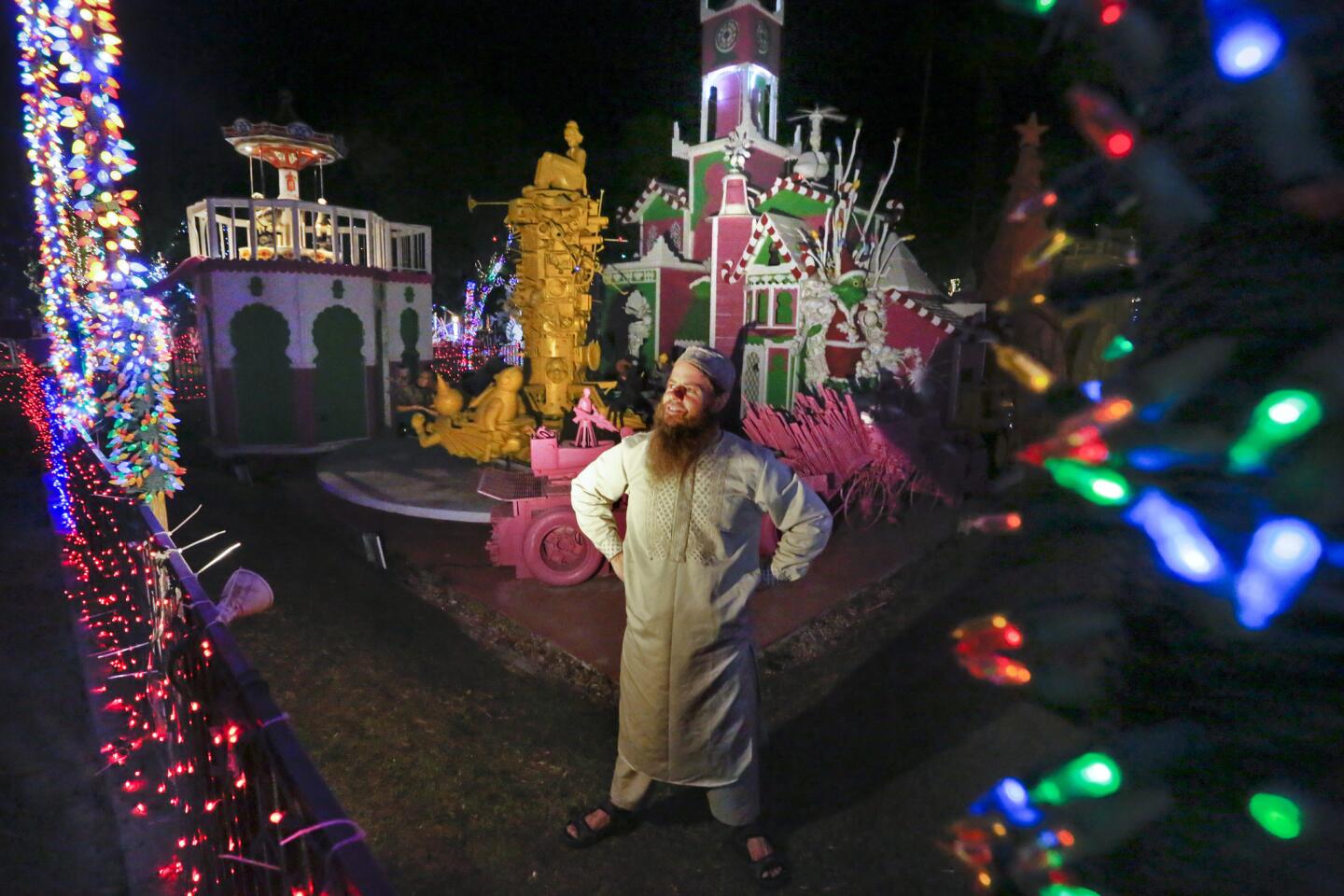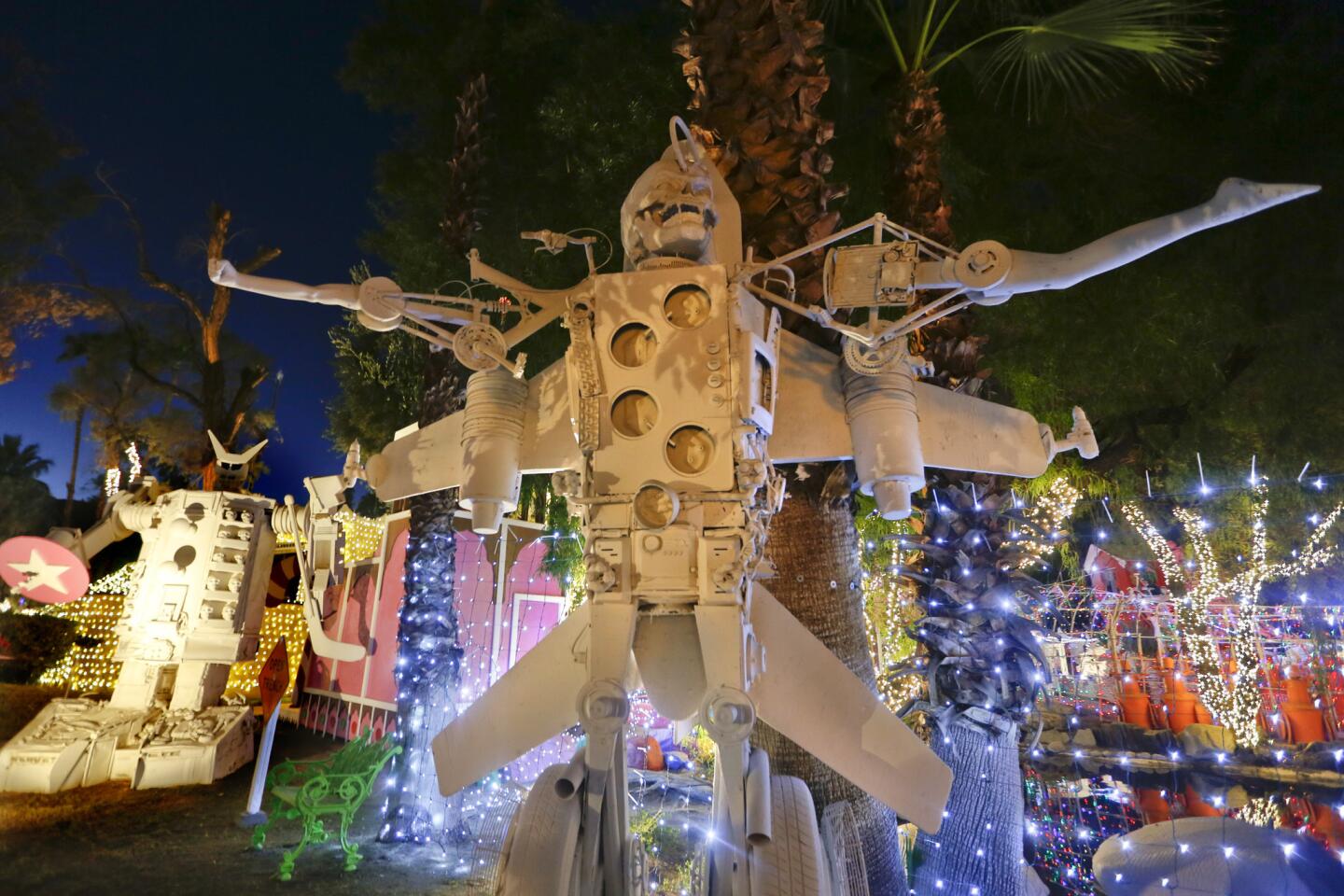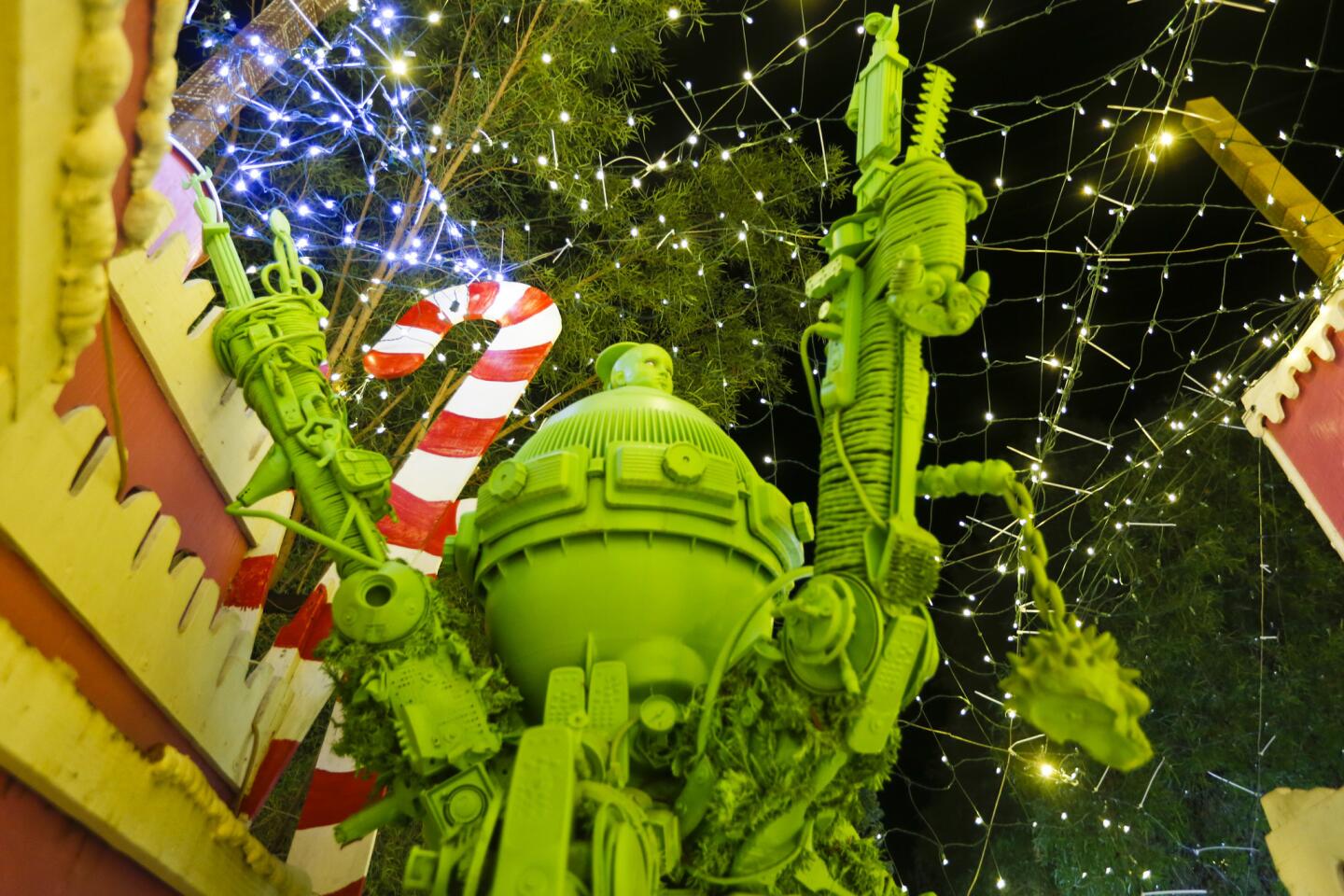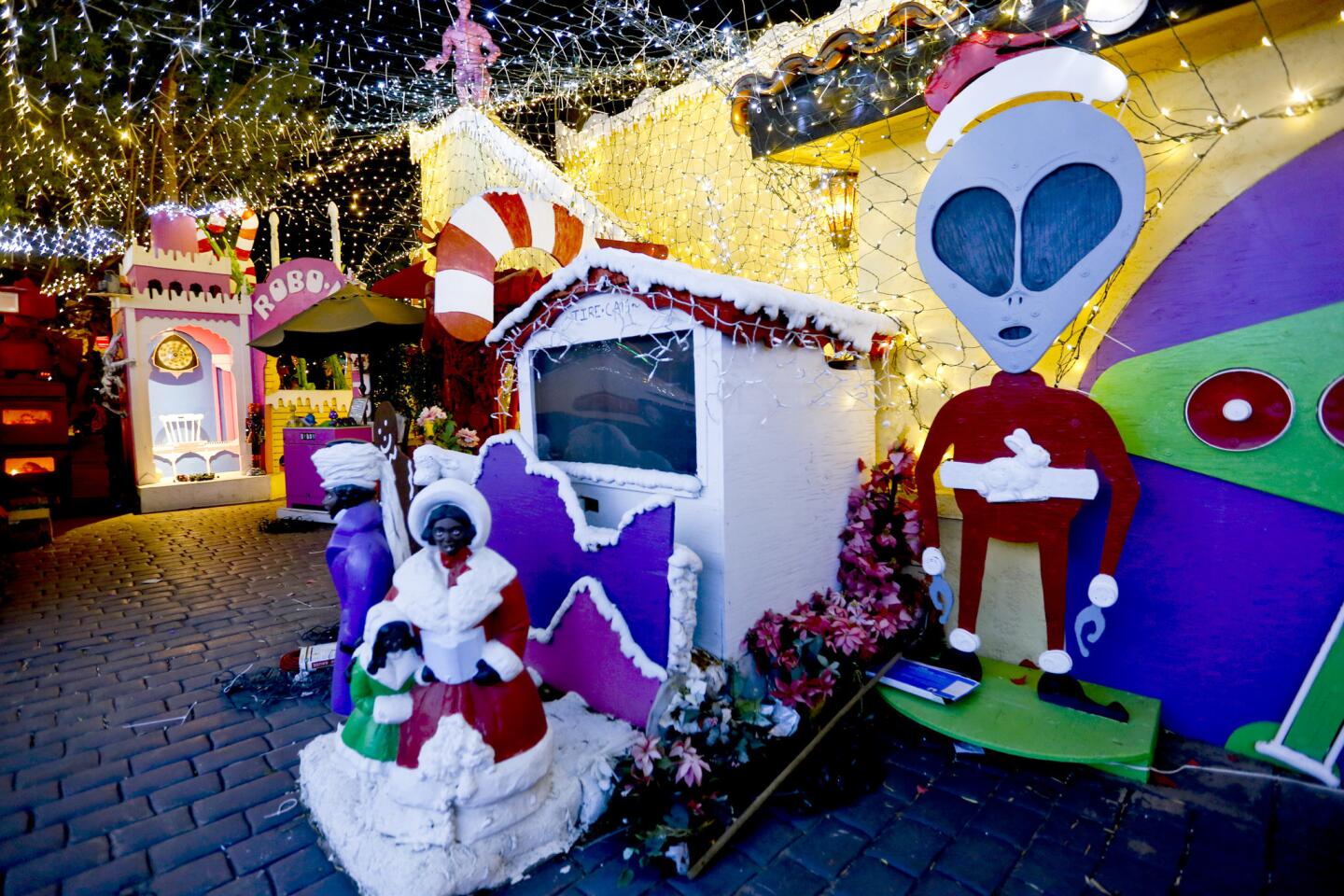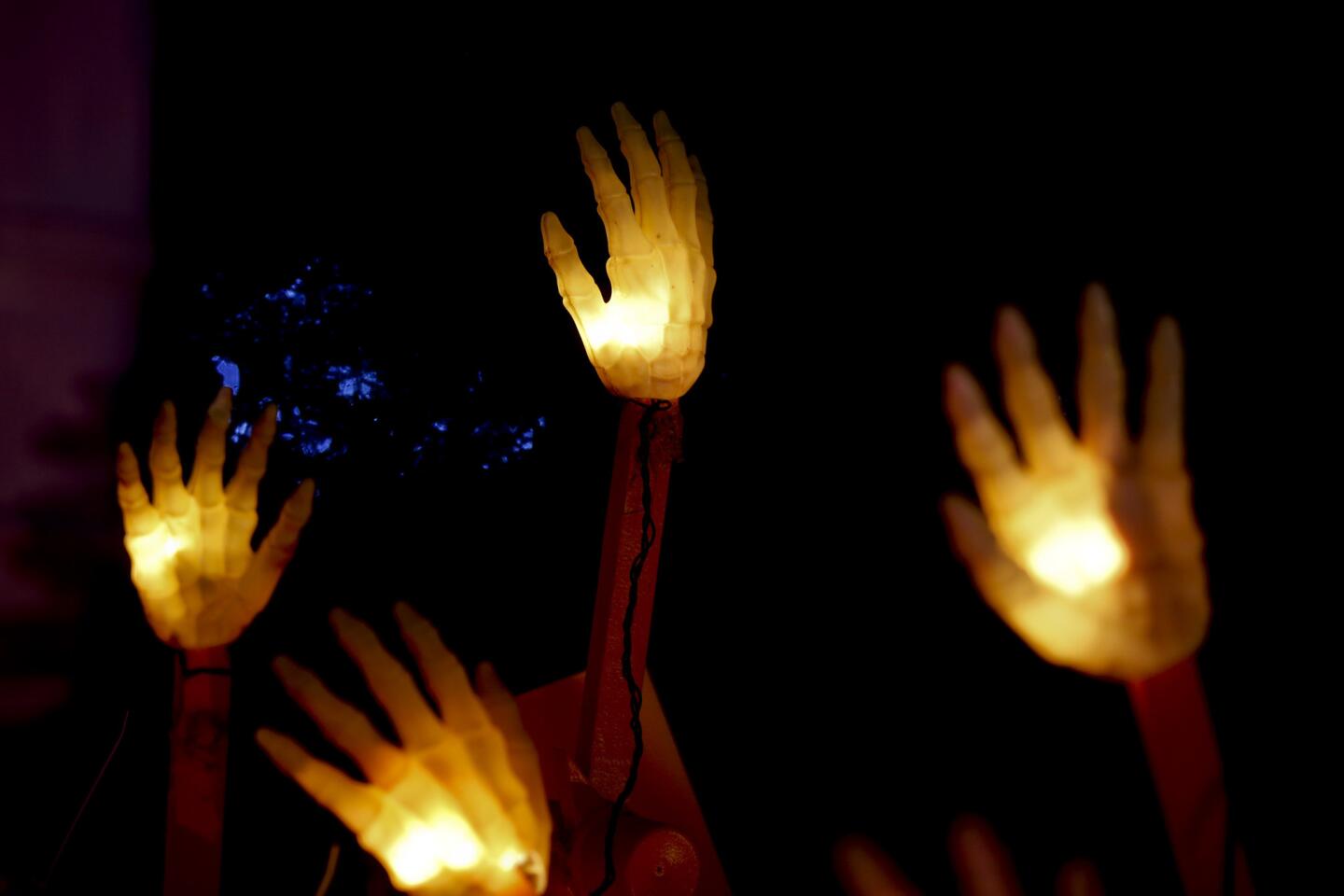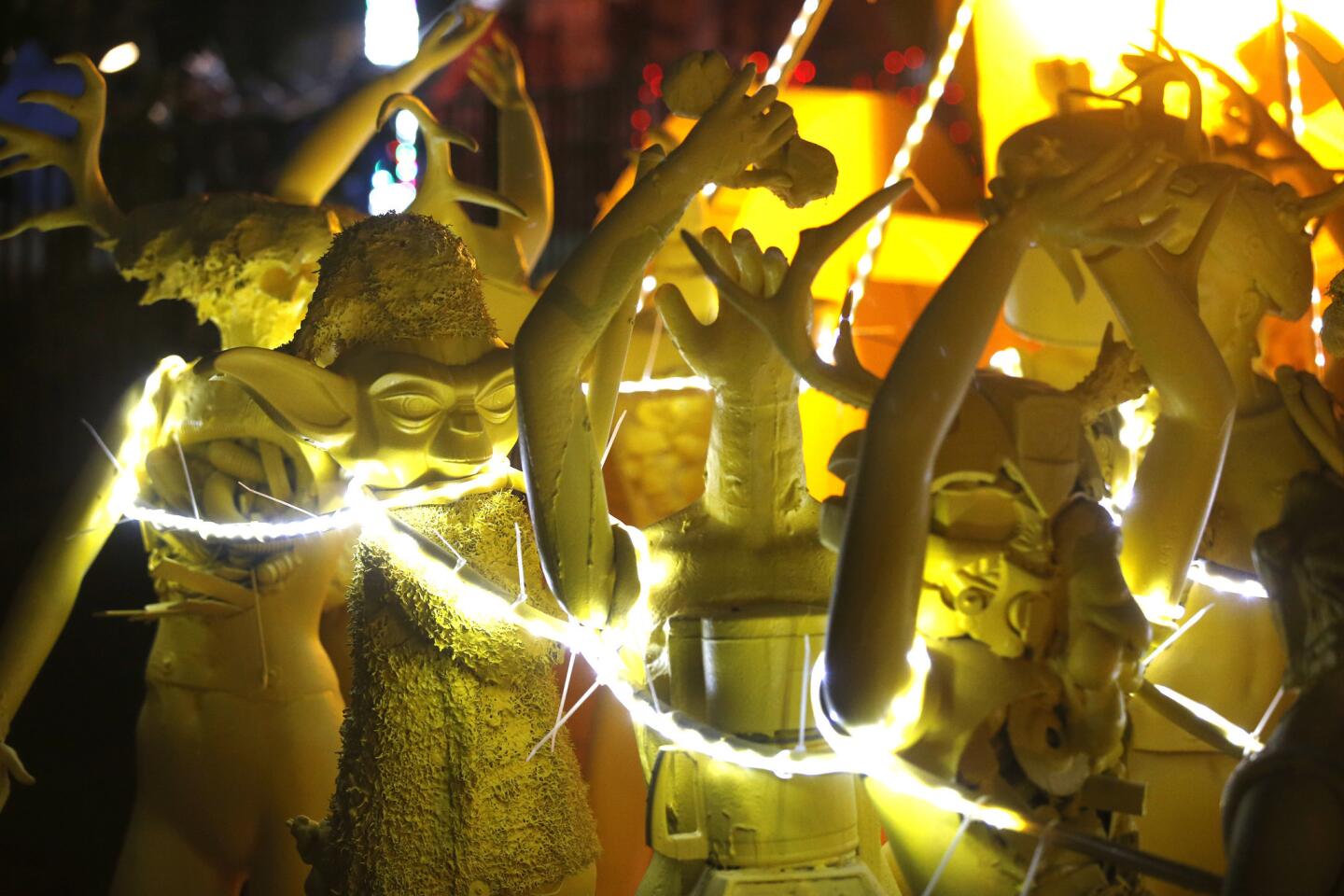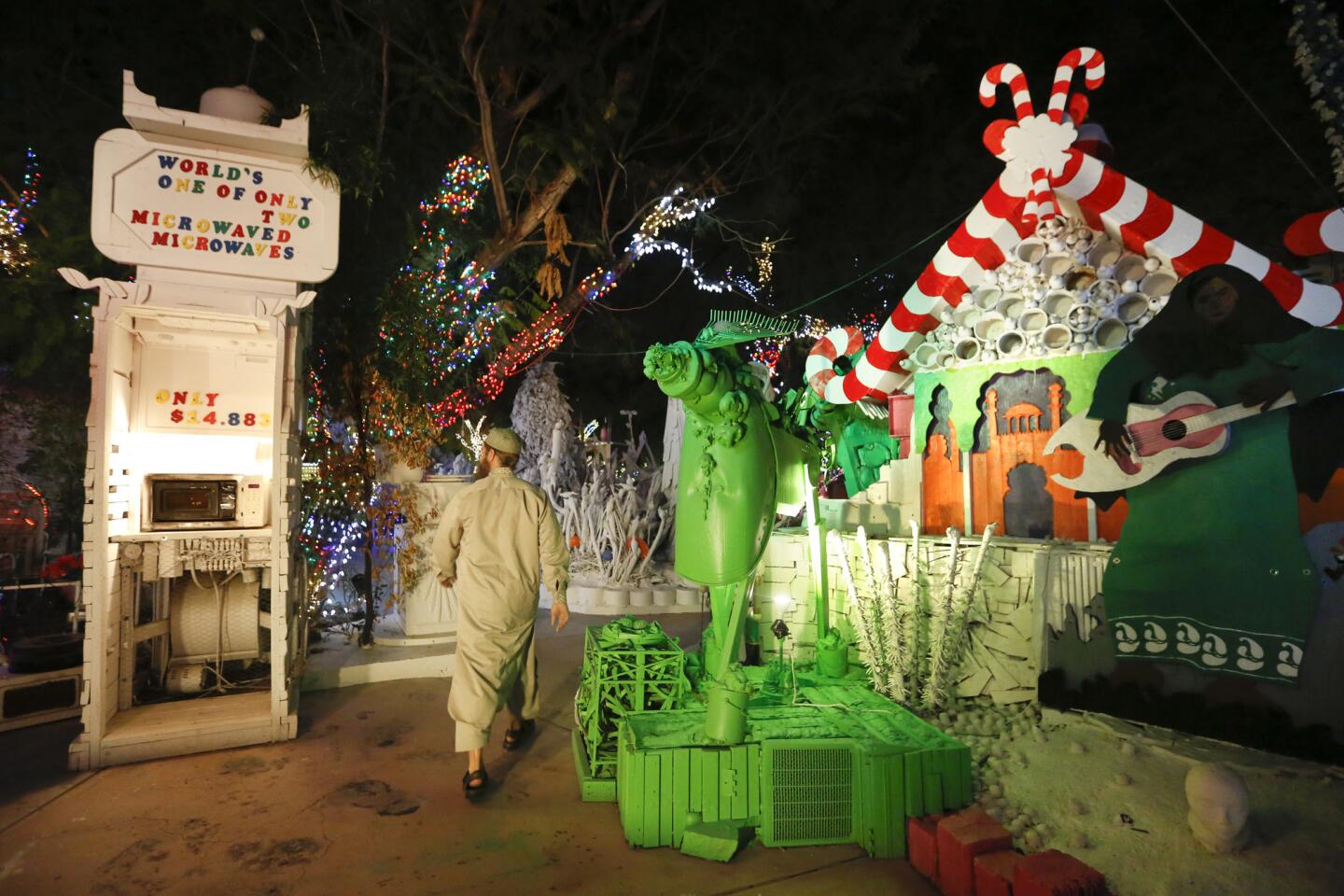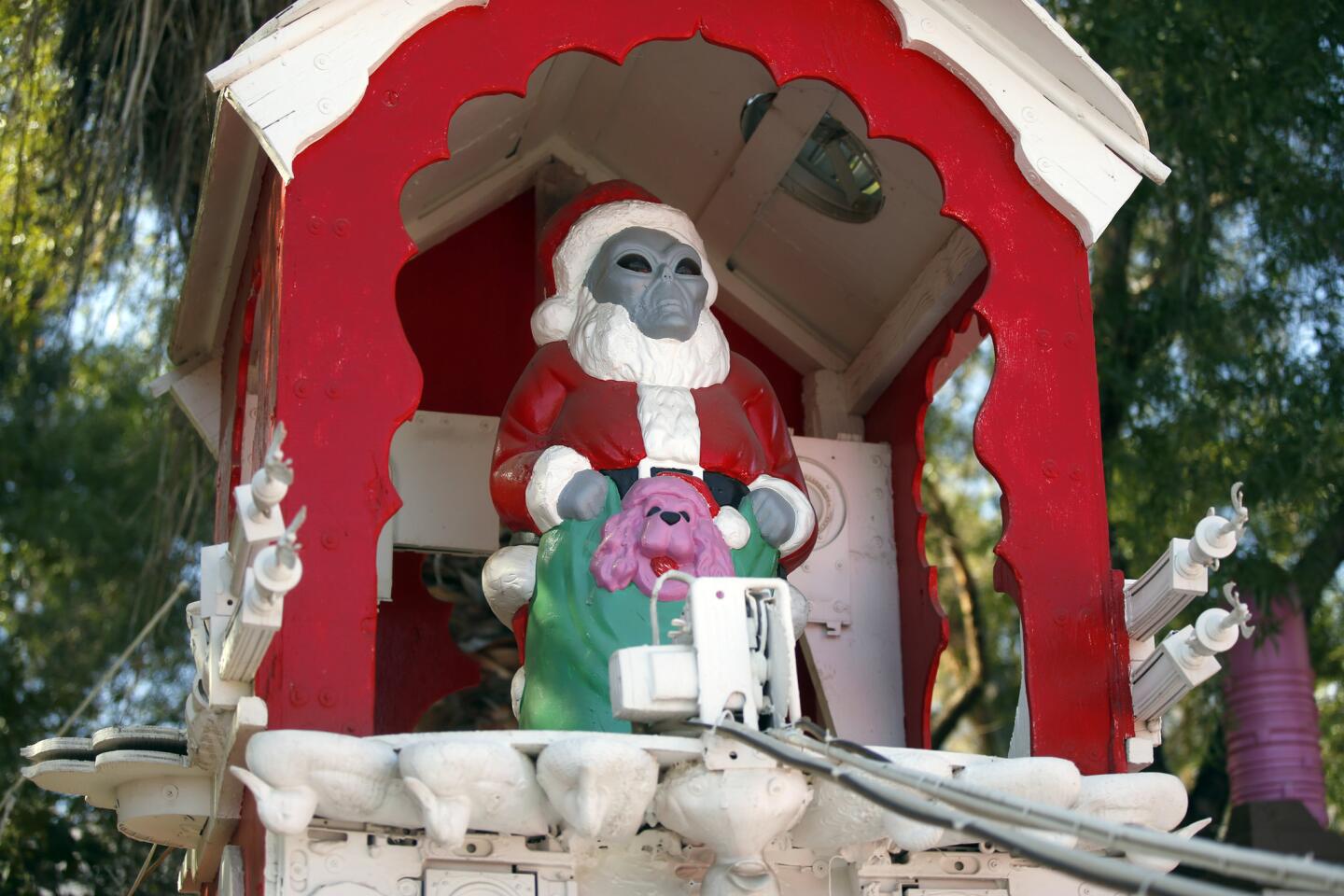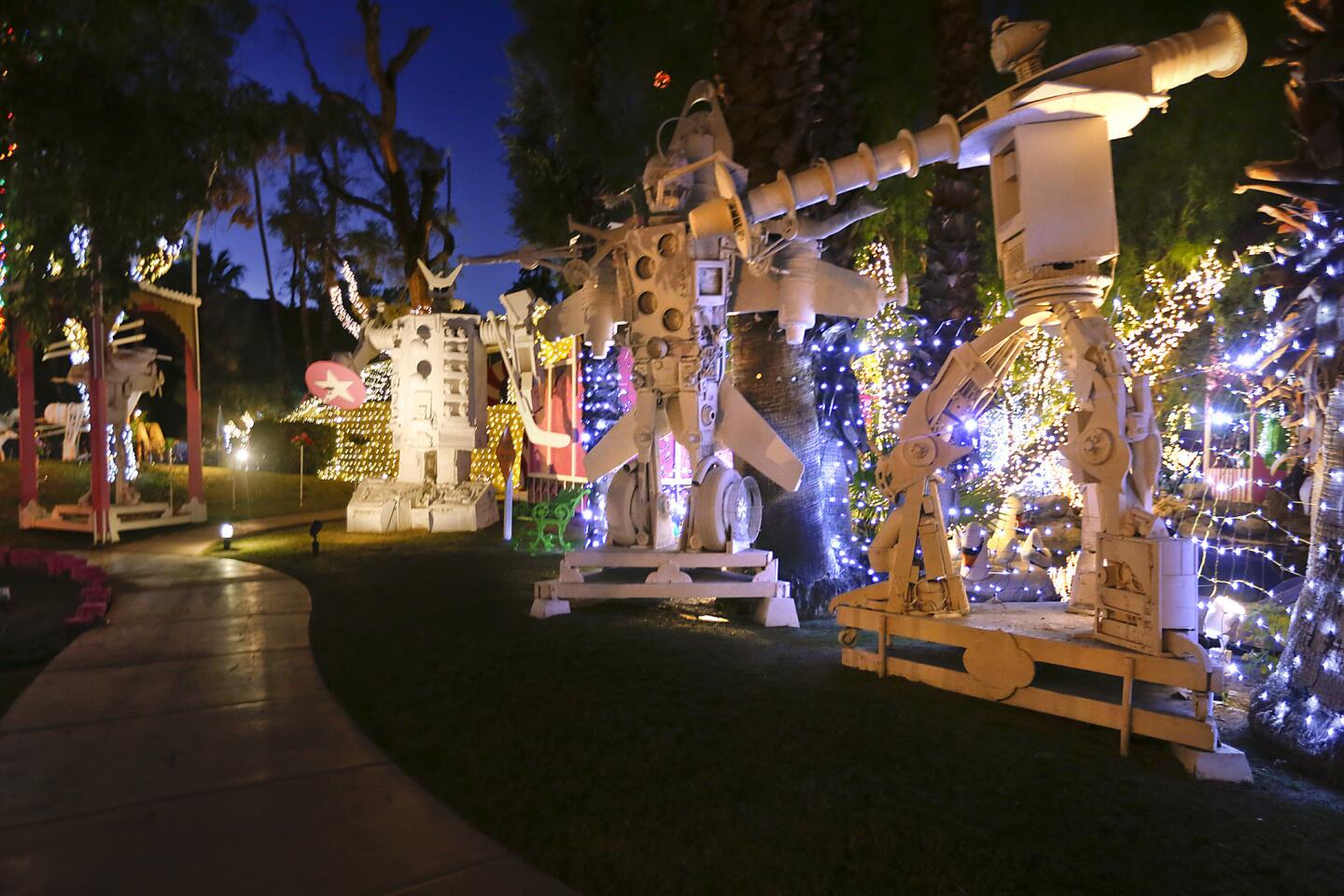Palm Springs artist’s Robolights display continues to glow -- and grow
- Share via
Reporting from Palm Springs — In a neighborhood known as the Movie Colony — a place of tidy, gated properties once home to numerous Hollywood stars — three towering robots made of old appliances, lawn furniture and wood scraps stand several feet tall in front of one home.
Inside its gate, amid the palm trees and bushes, a world of aliens, mutant Christmas elves and reimagined carousels made of discards peeks out.
This is Kenny Irwin Jr.’s world.
Since he was a child, Irwin has built giant sculptures of the creatures and places that fill his mind at his father’s two-acre home, just around the corner from Frank Sinatra’s old estate.
Now 41, Irwin has built on nearly every square foot of the property, on its tennis court and on his childhood sandbox, on the home’s facade and in his own bedroom, which resembles a sci-fi cave, filled with rocks and clocks, lights, crystals and giant screens.
He builds, using donated scraps and pieces bought on EBay, 350 days a year, 10 to 12 hours a day. During the holidays, he strings millions of lights from the property and welcomes thousands of visitors to walk through the display, which gets more elaborate every year.
Big as the property is, Irwin’s world is overrunning it. He needs a bigger canvas.
::
Irwin’s mind has teemed with visions of aliens and distant planets since he can remember. Even as a child, he felt compelled to transform objects and places around him into the stuff of those visions.
When he was a toddler, his father recalled, he drew rudimentary figures on the four walls of his nursery.
At 9, he built his first outdoor robot — a 10-foot tall wooden creature with a 1940s phone protruding from its chest.
At 15, he filled his dorm room at a boarding school near Ojai with so many twinkling Christmas lights and flood lamps and so much electronic equipment that fire officials believed it caused the dormitory to burn down.
“The kid was into light,” a fire investigator told The Times then.
Three years earlier, he had begun building what would become the sculpture display he calls Robolights at his father’s home.
Irwin’s father, Ken Irwin Sr., said he saw his son’s artistic talents early on and decided to encourage him.
His home, Irwin Sr. said, “is a canvas, and on that canvas he can create anything that he imagines.”
Today, almost all that remains untouched on the property is a patch of grass, a small patio and a pristine pool.
Visitors are welcome for a donation throughout the year. But it comes to life during the holidays, when it is illuminated with millions of twinkling lights and dotted with holiday-themed inflatables.
The event now attracts visitors from around the world. From opening day on Thanksgiving to closing day the first week of January, about 20,000 visitors walked through last year, Irwin Sr. said.
Irwin himself doesn’t celebrate Christmas, having converted to Islam years ago. But since he was a kid, he said, he’s wanted “to shine light” and sees the display as a way to do so.
In the past, some neighbors have complained about the elaborate display, but these days they are more likely to donate scraps for the art than to object to it, Irwin Sr. said.
There are hints of Dr. Seuss, Tim Burton and 1980s “Transformers” cartoons in the work. But though Irwin welcomes the comparisons, he says he doesn’t take inspiration from others.
Parts of it may seem dark to observers — there are robots with skull heads, a team of cyborg reindeer made of disrobed mannequins and what looks like a mash-up of a military tank and the old woman’s shoe from the nursery rhyme.
Irwin says dark edges aren’t what he’s going for.
“My main intention is to provide people with immense pleasure through the work that I do,” he said. “There’s not really any deep meaning in my art. It’s basically for the whimsy of it.”
On a recent weekday, Irwin readied the holiday display by hanging latex gloves bloated with hardened glue in an inflatable Santa’s workshop, which was already filled with several Santas and snowmen, one Darth Vader-like figure, a baby chick and a snake.
From a nearby tree, he’d hung more than a dozen black-and-white owls that peered upside down at arriving visitors.
There was a chance, Irwin said, that the holiday display would not happen this year because of shortfalls in funding. But his father helped foot the bill along with family members and others.
During the weeks leading up to the holiday opening, Irwin said, he works on Robolights almost nonstop.
When he’s not stringing lights and building sculptures in the yard, he’s still driven to make things.
He draws elaborate sci-fi scenes with ballpoint pens, creates skulls out of resin and makes what he calls microwave art by melting iPods, laptops and other expensive items in a microwave encased in a giant robot. (This form of expression has gained him several detractors, one of whom wrote for Canada’s Globe and Mail, “Let’s pray together that a new light bulb goes off in Kenny’s life and he discovers a different form of art.”)
He imagines continuing to create at his father’s home for the rest of his life, but says that inevitably his compulsion to build will come up against the fact that there’s less and less room to fill.
“My work is going to continue to grow, so it needs room to be able to spread to other places,” he said.
He’d like to have an agent represent the art so that it might spread to museums and galleries. For now, he promotes the work himself on YouTube, Facebook and his own websites.
“I’m good at creating the art but not representing it,” he said. “I don’t really know anything about the art world.”
There have been times when Irwin’s work has gained attention beyond Palm Springs. In 2010, he designed a holiday set for Conan O’Brien. And in 2013, he built an elaborate indoor display featured at the American Visionary Art Museum in Baltimore.
His installation there, called Robotmas, “was floor to ceiling, it was sound, it was light,” said Rebecca Alban Hoffberger, the Baltimore museum’s founder and director.
To get the sculptures inside, staff had to disarm the security system, take the front doors off the hinges, remove a wall and use a crane.
“It was the most expensive install in our history,” she said.
“Despite any of the trials and tribulations of letting him really do his full vision,” she said, “it was wonderful. Young people still come in and remember it.”
Others looking to display Irwin’s work in a less cost-intensive manner might consider his drawings, she said.
Twitter: @palomaesquivel
More to Read
Sign up for Essential California
The most important California stories and recommendations in your inbox every morning.
You may occasionally receive promotional content from the Los Angeles Times.
